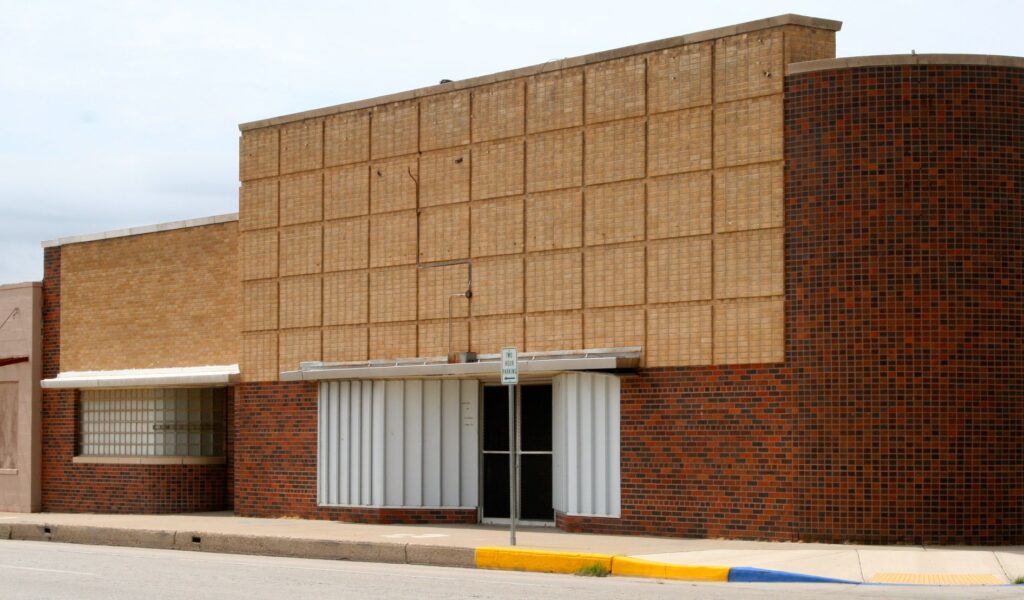Constructed 1930.
Anchored by its courthouse square with numerous heritage evergreen and deciduous trees, the compact Lovington Commercial Historic District retains its early twentieth and mid-twentieth century building stock, its historic feeling, and associations with ranching, function as a county seat, and later, with the oil and natural gas industry of southeastern New Mexico. The commercial streetscape is defined by one to two story buildings, mostly brick, hollow clay tile, and concrete construction. The architectural styles of the district include the Decorative Brick Commercial style, Art Deco, and Moderne styles, as well as a fine collection of Modernist buildings dating to the late 1940s, including the Lovington National Bank and the adjacent office of Senator Frank Jack Danglade at the north end of the district. These contemporary buildings share similar details and likely the same architect.
The Lovington Historic District encompasses four historic buildings that are already listed in the State and/or National Registers including: the Lea County Courthouse ; the 1918 former Commercial Hotel, now the Lea County Museum; the Lovington Fire Department Building; and, the Lea County Theatre. In addition to these significant structures, the district historically contained a variety of other businesses and institutions that provided conveniences and amenities to this small rural town, such as pharmacies and drug stores, mom and pop groceries, local car dealerships, and multiple banks. Some of Lovington’s important extent buildings include: the Lister Grocery (ca. 1931-1932); the Lea County Motor Company (ca. 1940); the Lea County State Bank (ca.1928); the Lovington National Bank (ca. 1950); and, the City Drug Store (ca. 1930).
Madison Ave., E. First. St, Central Ave., Avenue B, Second St. Lovington, NM
Photo by Elmo Baca.




